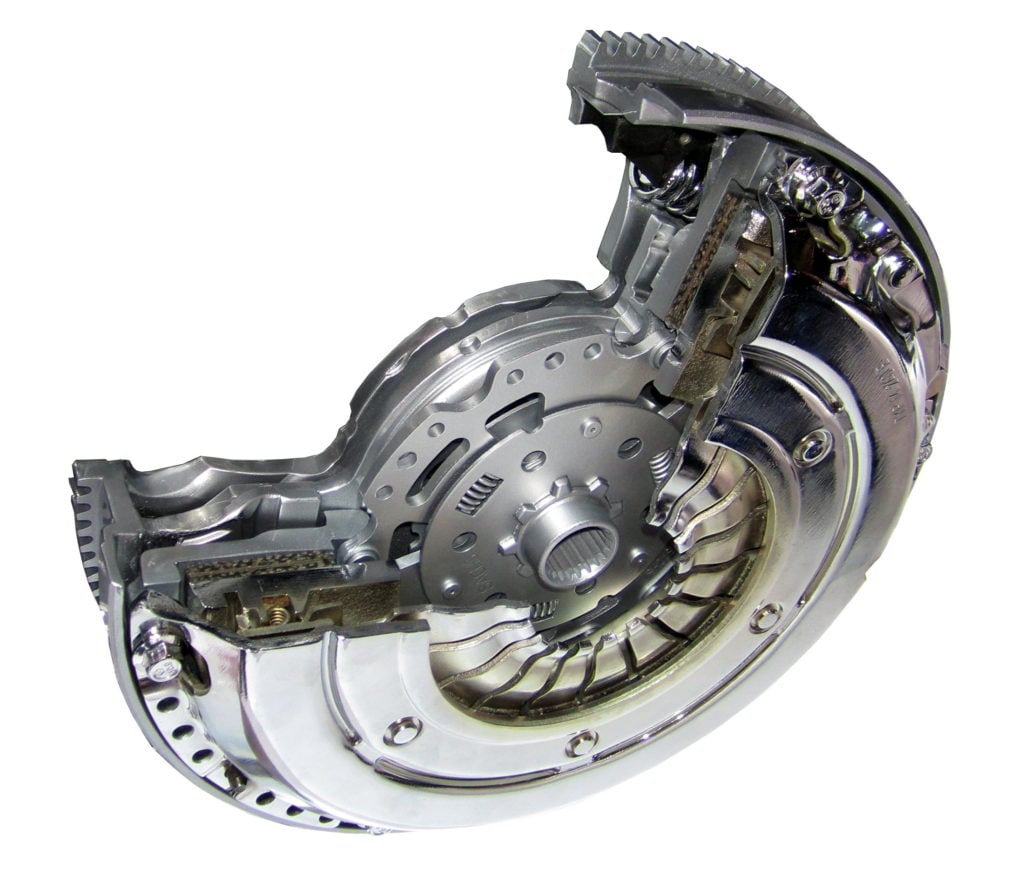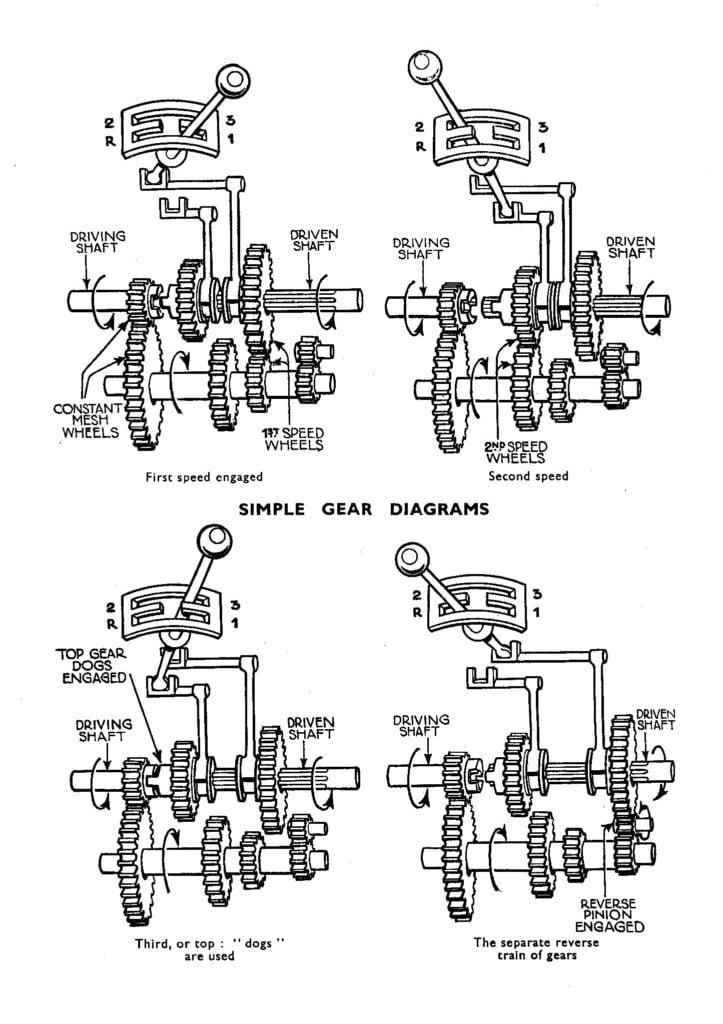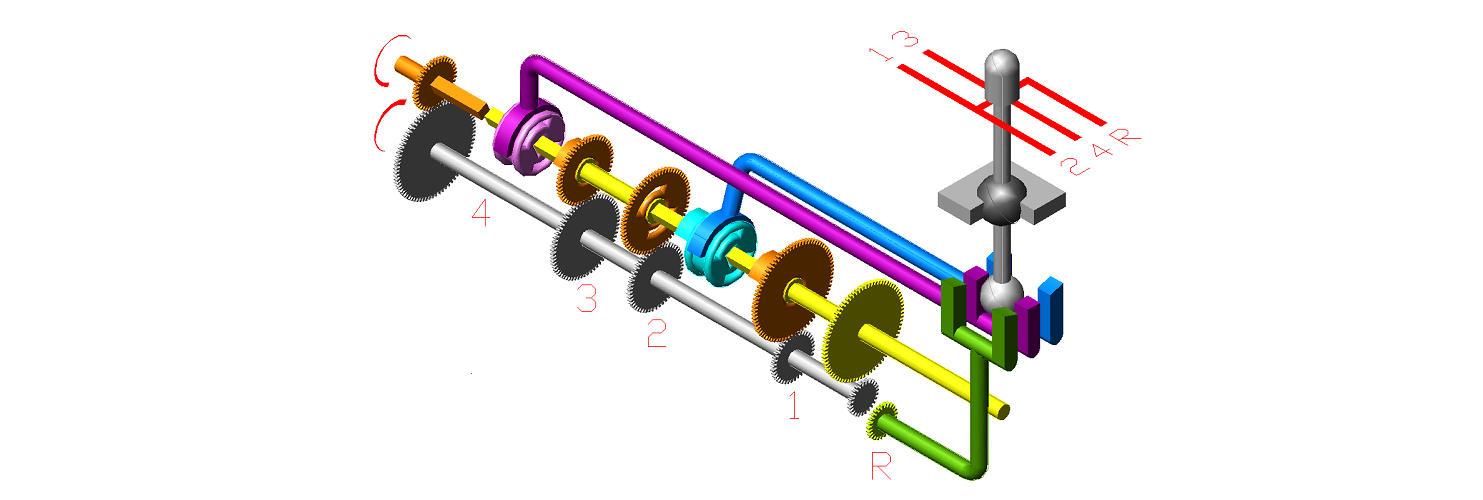Written By: Lawrence “LT” Tolman
Just like the books that were so popular as a kid, when driving a manual transmission, you are in complete control of your destiny. When taking off from a light, climbing a grade, or downshifting to accelerate, a perfectly choreographed dance between both feet and your right arm must be executed to change gear. After a while, this movement becomes second nature, and something you will never forget. Sadly, this is also a skill many young drivers will never learn, as the number of vehicles produced with an available manual transmission is steadily declining. In fact, as of 2019, you can no longer buy a diesel pickup with a stick shift. However, they still have their place, and many “hot-shots” who spend all day towing still prefer the old-school feel and gear choice of a manual transmission, plus it has the added benefit of less parasitic loss, and is more efficient than an automatic, which translates into slightly better fuel mileage. Today we’re going to take a closer look at some of the most popular manual transmissions offered through the years, some of their weak links, and how those weak links can be addressed.
The Players
New Venture: In 1990, GM and Chrysler merged parts of their powertrain divisions together to form New Venture Gear, which manufactured transfer cases and manual transmissions to be used in a wide range of vehicles, with the former being built in Syracuse, New York, and the latter in Muncie, Indiana. Their product line found its way into anything from pickup trucks to front wheel drive cars, but the units we’re interested in are the NV4500 and NV5600 manual transmission.
The NV4500 is a 5-speed gearbox found in both GM and Dodge full-size trucks, behind both gas and diesel engines, and there are several variations. The main differences are in the ratios and size of the internal shafts, which were specific to each powerplant the trans was originally attached to. The Cummins powered Rams first got the NV4500 in 1994, and one year later, 6.5-liter GM diesels were also paired up. It’s made from cast iron and has a max input torque rating of 460lb.ft., but many times this transmission has proven itself behind engines with a much higher output. The most well-known flaw of the 4500 is the nut that holds 5th gear onto the main shaft. If the engine is operated in 5th gear at high load and low RPM (think towing) the nut tends to vibrate loose and back off, allowing the gear to slide toward the rear of the shaft, making 5th gear inoperable. When this happens, luckily there will be no damage to the rest of the transmission, and 1st through 4th gears will still be operable. There have been several stop-gap solutions released, mainly involving different types of lock nuts and thread-locking compounds, but most of the time the problem will eventually come back. While it seems drastic, for some, the permanent fix is to simply TIG weld the nut onto the main shaft.
In 1999, Dodge offered another manual transmission behind the High Output 5.9 Cummins, this time with six speeds instead of five. The NV5600 was also made from cast iron, and now the input rating was raised to 550 lb.ft. One thing that makes the NV5600 so popular amongst those who tow heavy loads is the wide range of ratios which help get the truck moving, yet still have a reasonable RPM at highway speeds. You can start off in first gear with an ultra-low ratio of 5.56:1. 2nd through 5th gear has a spread between 3.38 to 1.00, giving less RPM drop between gears, and 6th is technically an overdrive, coming in at 0.73:1. While physically the 5600 is much stronger than the earlier 5 speed, there are some complaints about it not shifting as smoothly, especially once the miles have accumulated. Its suggested by some that different types of fluid can make some difference in shift quality, but more often than not, normal wear and tear of the synchronizer rings are to blame for a delayed gear change.
ZF: The German manufacturer ZF Friedrichshafen (or ZF for short) has been manufacturing transmissions and transaxles for a long time. In fact, the company was started in 1915 and originally made gears for zeppelins and other airships, but by 1919 they moved onto the automobile market. While today their units can be found in many high-end German and European cars, the 6-speed units we care about were found in certain Ford Superdutys and GM HD’s. While they are all called the ZF6 as a shorthand, there are technically two separate models. The ZF S6-650 was found behind the 7.3 Powerstroke and the 6.6-liter Duramax until 2006, and the stronger ZF S6-750 was found on the 6.0 and 6.4 Powerstroke from 2003 to 2010. Other than an application specific bellhousing, there were very few differences in the ZF6 over the years. All had the same ratio spread of 5.79:1 in first gear to 0.72:1 in 6th and all were made from aluminum. The 2003+ Ford versions were equipped with an oil pump which helped lubricate the bearings and allowed an external oil cooler to be fitted, which is a very rare feature on a manual transmission. Sadly, the Chevrolet units with the S6-650 did not get this feature.
Between Ford and GM combined, there weren’t a ton of trucks equipped with the ZF6, and it’s likely the rarest manual of any diesel truck. Nonetheless, it is a stout unit and is known to be the most reliable of the bunch. While there have been some failures in extreme performance conditions like at the drag strip or sled pulling, for most enthusiasts the ZF6 is as strong as they’ll ever need. And for you trivia nerds out there, here’s a fun fact: ZF’s German name Zahnradfabrik Friedrichshafen directly translated into English means “gear factory”.
Mercedes Benz: The next German transmission manufacturer to partner up with an American automaker is Mercedes Benz. Originally designed for the Sprinter van, the G56 is a six-speed manual first found behind the Cummins in 2005, which was an overlap year. There was no rhyme or reason, but some Rams got the G56 and others still used the older NV5600. An easy way to ID which gearbox you have is simply looking at the shift pattern. If reverse is to the right and up, you have a NV, and if reverse is to the left and down, it’s a G56. From 2006 onward the G56 was used exclusively, and the models found behind the 5.9 Cummins had an extremely low first gear of 6.29:1, but in 2008 with the introduction of the 6.7, the ratios were updated and used a more reasonable 5.94:1 in first. Final drive ratio in 6th gear was 0.79:1 for the earlier years, and 0.74:1 for the later models.

The G56 is the 6.0 Powerstroke of the manual transmission world. There’s no other way to put it. Right off the bat, Ram had to de-rate the Cummins engine so the dual mass flywheel and single disc clutch could cope with the massive amounts of torque. In order to have a noise and vibration free driving experience, Ram used a dual mass flywheel to make an insulator of sorts between the pulses of the engine and the transmission. Instead of bolting the flywheel directly to the crankshaft, the friction surface (and most of the flywheel’s mass) is isolated from the engine with two dampening springs, which at a stock power level accomplishes what it was designed to do. The driver has a pleasant vibration-free drive, with silky smooth clutch engagement. The problem is the dual mass design doesn’t hold up over very well time, and the pieces that control the two halves can fail, resulting in an imbalance and excessive vibration which can damage the transmission or the rear adapter plate of the engine. While the dual mass flywheel is problematic at a stock power level, when the power is increased, the failure rate also goes up, plus the torque capacity of the clutch is marginal at best. To prevent any issues, it’s a good idea to swap out to a more traditional style single mass flywheel with a conversion kit. This may increase vibration ever so slightly, but if that’s a concern, a Fluidampr harmonic balancer can be installed on the front of the crankshaft to smooth out any vibration, giving your G56 Ram a much more reliable clutch while still keeping the truck vibration free.
Many owners of the G56 report issues with 3rd, 4th, and 6th gears failing, and the aluminum cases are known to crack under heavy (ab)use, and finally the main shaft bearings are known to have premature failures as well. There is some debate on proper lubricant as well: if you ask Chrysler, the fluid spec’d is ATF+4, a thinner automatic transmission fluid, but if you defer to Mercedes (who actually builds the gearbox) their recommended fluid is a much thicker 75w90, and enthusiasts even have their own spec of synthetic manual transmission fluid which is said to give smoother shifting and better lubrication to the bearings. It’s also common practice on a G56 to over-fill by one quart, as it’s said the extra fluid will help extend the life of the trans. One thing is for sure though, if you own a G56, be very careful of how much extra power you add to your truck and resist the urge to use it like a drift car. A hot tune and a clutch kick may be biting off more than it can chew, and you might wind up with a seven-neutral trans.
Upgradez
Now that we’ve covered the nuances of each individual unit, let’s talk about how they can be made more durable, as generally all manual transmissions need the same type of upgrades to better hold up to a powerful diesel engine. Admittedly, there isn’t as much aftermarket support for the manual as there is for the automatic, but you can still beef up a stick-shift trans. First and foremost, is a better clutch. With so many options for each transmission, it can seem difficult to pick a clutch that will meet your needs, but the best rule of thumb is be realistic and honest with yourself about how much power you are really putting down. While is seems like a good idea to buy the clutch that’s rated at the highest power level you can afford, THAT’S A BAD IDEA. I cannot stress that enough. The more capacity a clutch has, the more difficult it will be to drive. If you make less than 430 horsepower in your daily driver but choose a metallic triple-disc clutch that’s rated for 1,000hp “because you’ll make that much power someday” you’ll quickly see the error of your ways the first time you take off from a stop sign. The engagement will be much too harsh, the truck will jerk, and you likely will stall the engine. The pedal will require much more effort than before as a stronger clutch has a stiffer pressure plate, and in extreme situations the aggressive nature of the clutch can damage your transmission as well.
For most diesel owners who daily drive and tow, plus have average to moderate modifications, a dual-disc organic clutch from South Bend will be in the goldilocks zone for your transmission. Stronger than stock, but not too aggressive. While it has two friction discs, they’re made from an organic material which allows enough slippage for smooth engagement, but it’s still rated to hold 650 horsepower AND tow up to 30,000 pounds. Two friction surfaces also means you don’t need an extreme clamping load from the pressure plate, so you have near stock pedal feel and your left leg doesn’t have to look like Arnold Schwarzenegger’s. A clutch is absolutely a critical modification on a hopped-up diesel, especially if you tow a heavy trailer, but remember, choose widely.

Once the clutch is taken care of, you are usually good to go, but earlier transmissions like the NV4500 can use a little more help. The stock input shaft is only 1.25” in diameter and it can be twisted from extreme use. So, it’s a smart idea to swap to a larger 1.375” input shaft if you throw any serious power at an NV4500, or if you sled pull. The nice thing is the bigger shaft has more clutch options available as well.
The manual transmissions found behind diesel engines are primarily designed to hold up to massive amounts of torque, and they do usually take a lot of arm movement to shift, which some drivers find annoying. A short throw shifter is a popular upgrade amongst the muscle car and sport-compact crowd, but the diesel guys can also benefit from decreasing the distance between gears. BD Diesel offers a bolt in conversion for the NV4500 or 5600 which will reduce shifter throw by 20% and give a much more positive feel when selecting your next gear, making the truck much more fun to drive.
There is a lot of heat which can build up inside a manual transmission, especially if you tow, and unless you have a Ford ZF6, there is no way to reject that heat through an external cooler. Most manuals have at least one PTO provision, and Fast Coolers offers a kit which bolts to a standard size PTO flange, and offers the same benefits as a deep pan for an automatic trans. The extruded aluminum extension bolts onto the transmission case, and acts as a heat sink, to pull heat away from the fluid. It also increases the fluid capacity, and as a result, reduces the temperature on average by 30 degrees. And as we all know, cooler fluid lasts longer, and leads to a happier transmission. As an added bonus, the rigid aluminum construction of the Fast Cooler actually strengthens the transmission its bolted to, which on a G56 can lessen the chances of breaking a case.
Paradigm Shift
Sadly, 2018 marked the last year you could buy a diesel pickup with a manual transmission. Ram held out a solid 8 years longer than Ford, and its been about 12 years since you could buy a manual Duramax. The main reason is declining market demand, as more and more drivers prefer the convenience of a slush box. It’s a ton of fun to row your own gears, but it’s a skill that’s slowly fading into obscurity. And while they’ll never shift as fast as a nicely built automatic, manuals do still have their place. Just keep in mind the power limitations of your unit, run the correct fluid, keep the temps down, and with the correct clutch installed you should be able to enjoy hundreds of thousands of miles of rowing your own gears.


I currently have a 2000 7.3 Ford powerstroke with the ZF6 with the oil pump and cooler.